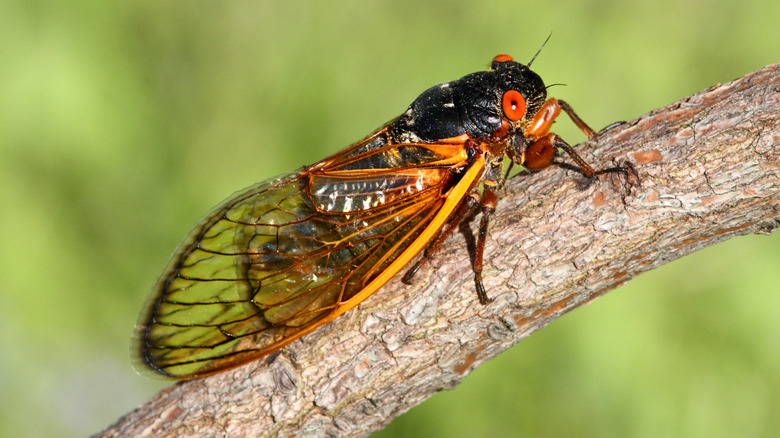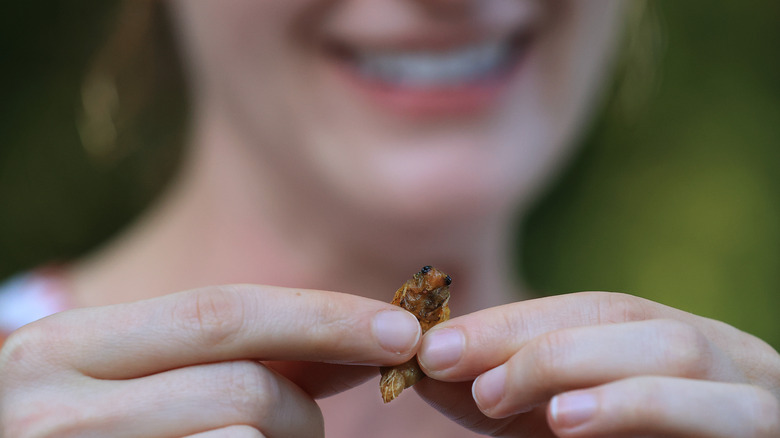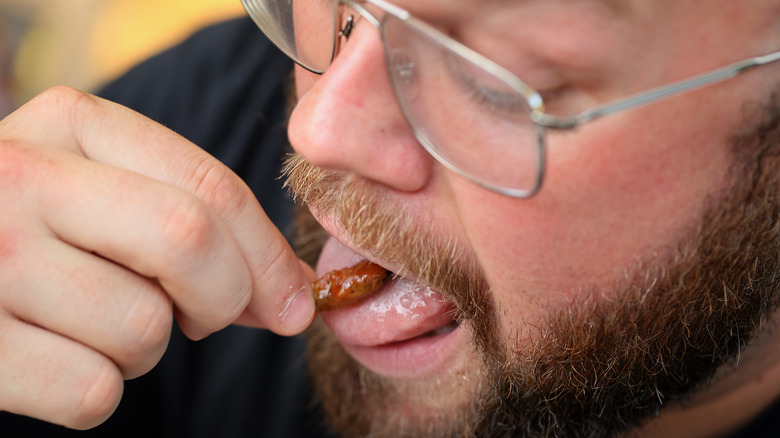Yes, People Are Actually Eating Cicadas This Summer
The Takeout's roots are deeply entrenched in Midwestern culture and food. From a detailed primer on Italian Beef etiquette to the ever-raging debate on the merits of Chicago's famous pizza styles, we are dedicated to exploring the region's culinary idiosyncrasies. This summer, the area has become home to a limited-time-only delicacy — the periodical cicada. This type of cicada spends the majority of its lifecycle buried underground, emerging to mate every 13 or 17 years. Illinois is where the 13-year and 17-year cicadas have overlapped the most this year, and the state's residents have not been letting this historic bounty go to waste. In fact, for a few weeks, there was a bar in Chicago serving up cicada-infused Malört shots. But for the most part, people are eating cicadas. Yes, that is happening — it's even going viral on TikTok.
Cicada enthusiasts have been beer battering and deep frying the bugs, roasting them, and topping pizzas with them, the Chicago Sun-Times reports. Some people say cicadas have a nutty, almond-like taste while others have said they have a more savory, vegetal flavor. Either way, these little critters only come around once in a blue moon, so it's no wonder people aren't letting them get away without a little seasoning. And not just in Illinois — people are eating these bugs across their range, which covers most of the eastern and midwestern U.S.
What's with all this cicada talk?
Eating an insect that only appears every couple of decades or so might seem odd. But, for some, this is the only way to deal with the wave of cicadas that has come to the Midwest (and the U.S. at large) this summer.
There are two broods of cicadas swarming Illinois at the moment and experts say they will continue to emerge from the ground in the region for at least two weeks. After the emergence of the broods, they will continue to live out their lifecycle above ground throughout the month of June. What makes this emergence so historic is that it has been over 220 years since Brood XIII (a 17-year brood) and Brood XIX (a 13-year) have emerged together. While most states in the cicadas' range only have one brood or the other, the two broods meet in Illinois.
You may not find cicadas on the menu at restaurants near you, but many cultures around the world eat insects regularly. The University of Minnesota notes that up to 80% of nations in the world have a tradition of insect-eating. Historically, cicadas were often part of the regular diet of Native Americans. And this year, many people around the country are taking part in this ancient practice.
How to safely eat a cicada
While the practice has been culturally accepted for some time, that doesn't mean you can just go around picking up cicadas off the sidewalk and popping them into your mouth. When it comes to selecting which cicadas to eat, it is recommended that the cicada be just past its molting stage. This means the cicada will look white because it has shed its exoskeleton and will likely be found on a tree trunk or branch. However, be careful about grabbing one from your backyard or lawn if you tend to use chemicals on your grass. You should also not grab them from near old houses in case they could be contaminated by lead paint (via The Ohio State University).
As with any good dish, there's some prep work that needs to be done to eat the cicada as well. To humanely kill the cicada, you should freeze it overnight and then thaw it when you want to eat it. The head and wings should also be removed, so you're mostly just eating the abdomen.
Also, there is some scientific evidence that suggests that people with shellfish allergies should avoid eating cicadas, as they could have an allergic reaction, according to a post on X from the U.S. Food & Drug Administration. So whether bug consumption is on your daily menu or not, at least now you know how to eat this insect in the safest way possible.


